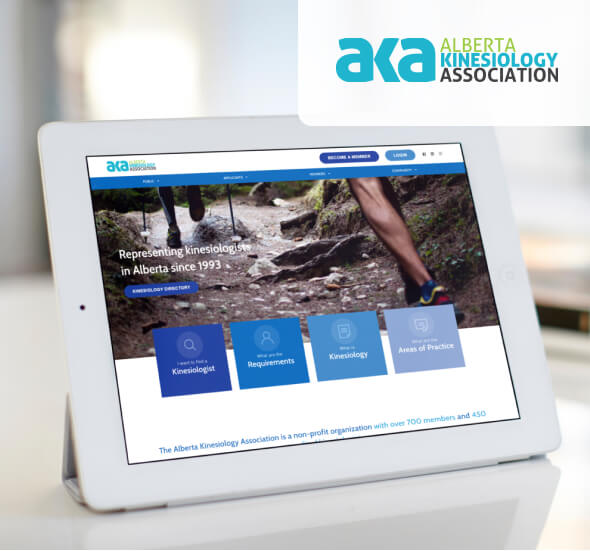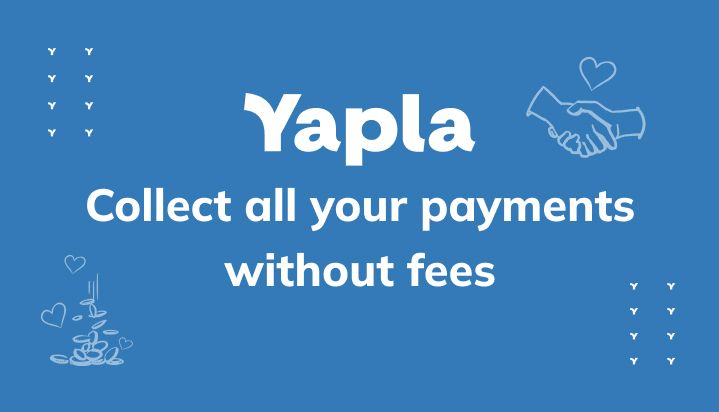
Giving visibility to your NPO and its initiatives in order to increase its impact is a major challenge. To do this, nothing beats implementing a good communication strategy, leveraging on the power of digital technology. In addition to offering improved visibility to the organization, a digital communication strategy can be used to resolve other problems: lack of personnel, financial resources, etc.
Where to start and how to go about developing and implementing an effective communication strategy for your NPO? How can you take advantage of the many techniques available to reach an ever-growing audience and create an enduring commitment? Here are some tips to guide you.
What is a digital communication strategy for your NPO?
First and foremost, when we talk about communication, it is important to remember that communicating is not limited to simply transmitting information. Communication is a real driving force that allows you to meet your needs and face your challenges. It must be part of your organization's overall strategy and goes hand in hand with your NPO marketing strategy. A good communication strategy consists of sending the right message, at the right time, to the right people and through the right channel.
A digital communication strategy corresponds to the implementation of a set of digital actions in order to reach the set objectives.
Why develop a digital communication strategy for your NPO?
As an NPO manager, it is important to measure the impact of the digital presence vs. the digital absence of its structure. Beyond being an important lever of visibility and performance to carry out your mission, your digital presence is what establishes your credibility and legitimacy to the world.
Google registers no less than 80,000 searches every second, or 6.9 billion per day. When we have a question or need information, we tend to look for our answer on the internet. In other words, there is a strong chance that a person (potential member, donor, partner, volunteer...) looking for information about your organization or your activities, will look for answers to their questions by searching for you on the internet. If you are not present, this person may be frustrated and pass by or even worse, form a bad impression of your organization.
However, keep in mind that your digital tools should meet specific communication objectives established by your organization and be consistent with its positioning.
Your NPO communication strategy will help you stay focused and will force you to align your various actions. To get off on the right foot and set objectives that will guide you, we recommend that you set SMART objectives.
Of course, to achieve these goals, you need to put in place the right actions, well thought-out tools and resources. Let's take a look at the different communication levers available to you as a non-profit organization!
Which digital communication levers to use for your NPO?
First of all, when working on your NPO's communication strategy, the mistake not to make is to consider the Internet as a single medium. In fact, the Internet offers you a multitude of media!
Among them, there are the so-called :
- "Paid": corresponds to paid media, such as LinkedIn Ads, Google Ads, Facebook Ads, etc....
- "Owned": corresponds to media owned by the company such as the website or social networks.
- "Earned": equates to customer reviews that can be found on google, forums, reports, social networks, etc... and cannot be controlled by the organization.
The website and the search engine optimization (SEO)
The internet can bring a lot of visibility to your organization. As a true showcase for your NPO, it is essential that your website be pleasant to visit. A poorly done or non-existent website could harm the image and the e-reputation of your organization. This could call into question the legitimacy of your organization. Having a website is an opportunity to make an excellent first impression and to reassure those who don't know you.
As a non-profit organization, you probably don't have a lot of time and money to waste. That's why, if you want to set up an attractive, functional and easy-to-use website, there are many tools like Yapla that enable you to create and maintain your website as an NPO. (We give you more details later in the article).
If you want to go further and exploit the full potential of your website to enhance your visibility, this requires some search engine optimization (SEO). This is a set of techniques that enable your site to rank well on the search engine results pages. It should be noted that for a non-profit website (especially for a small local operation), "local SEO" will likely play an important role. This means optimizing your site to show up in searches for people who are physically nearby.
While SEO can be a complicated subject, you don't have to be a master at it to benefit from it, so even if you only learn the basics, your organization can benefit greatly.
For example, writing a blog is a way to publish content that will improve your ranking on search engines (like Google) and therefore generate traffic. Positioning yourself as an expert in your field of activity, through your blog will also allow you to improve your visibility.
Social networks for your association
LinkedIn, Instagram, Facebook, TikTok, YouTube, Twitter,... social networks are excellent springboards for your digital strategy, provided they are carefully selected.
You don't have to use them all at once. Just choose the ones that best fit your target audience.
Each channel has its own way of working, its own codes of practice and communication trends, and above all, each social network has its own algorithm. In the same way as SEO with Google, your visibility on the social networks you use will depend on your ability to adapt to their specific codes of practice and trends.
It is also recommended to adapt your content to the different characteristics of each social network and its audience. Furthermore, in parallel to creating and publishing content on social networks, being active on your account by interacting with other users can really make a difference. So take the time to follow other players in your sector and interact with their content.
On Facebook for example, you can create or join community groups that are interested in your cause. This way, you can follow the news and also share your own: volunteer offers, membership campaigns, donations, etc. However, be sure to respect the rules of these different groups. Some groups refuse to share content that advertises or promotes their organization.
Finally, an important thing to develop the presence of its association on social networks is to stay on top of the news and any evolutions to their codes of practice.
Advertising with Google Ad Grants
Advertising is an effective means of communication when you want to improve your visibility. For NPOs, there is the Google Ad Grants program which grants under certain conditions $10,000 per month of in-kind advertising to be spent on pay-per-click (PPC) advertising, as well as full access to Google Adwords.
Emails and newsletters
From simple emails to weekly or monthly newsletters, emails are a great way to communicate.
With a solid contact list, you can effectively distribute your content and develop long-lasting relationships with your community, but without spamming your recipients.
The idea is not to have a written communication with a commercial objective, but rather to feed your audience with your content. For this, you need to have the right tool in order to make the most of your contact base.
To summarize, whatever your preferred communication channels are, don't forget to adapt your content to different formats (videos, visuals, articles) and to distribute them on strategically selected communication tools. In addition to allowing you to generate more visibility, you will save time by capitalizing on what you already have.
However, it is not enough to randomly choose a few of these channels to build an effective communication strategy. It must be thought through and above all, it must evolve and grow in tandem with your organization. Creating a TikTok account or redesigning your website is not a digital communication strategy. These actions only make sense if they are part of a well thought out plan. That's what we'll discuss in the last part!
10 steps to set up your NPO's digital communication plan
If you are able to answer each of the following points, you will avoid the risks of dispersion or miscommunication.
1. Designate a person responsible for the project
First of all, it is essential to designate one or more persons to be responsible for your communication.
This person can be 100% dedicated to the project, or you can assign a volunteer who is already in charge of other subjects (secretary, treasurer, etc.). If you choose this option, do not underestimate the workload that this task can involve.
You can also ask for volunteers to help you with these tasks. Many communications students are looking for practical assignments that allow them to put into practice what they learn during their studies.
For more tips on recruiting volunteers, check out our article 6 Tips for Recruiting Volunteers.
2. Take stock of your NPO and its environment
Upstream, you should conduct a complete analysis of your organization and prepare a monitoring and evaluation plan. To do this, nothing beats going back to basics, for example by asking yourself these 3 questions:
- What is your mission? Why does your organization exist? What is its raison d'être (e.g. to fight against poverty)?
- What are your challenges? What are the things that could jeopardize your organization if you don't address certain issues? (Ex: Lack of manpower or funding for initiatives)
- What have you already put in place to address these issues? What were the results?
It is also important to look at your organization's external environment to identify potential opportunities and threats that could help or hurt you. Don't forget to take a look at the different stakeholders of your NPO as well as the other actors in your sector.
This will enable you to define precise communication objectives and a method adapted to the overall strategy of your NPO.
3. Defining communications objectives
For most nonprofit organizations, a communications strategy must include benchmark objectives (a minimum number of visits each month to your site, an email open rate, etc.) that allow you to track the success and/or failure of your efforts. This allows you to optimize and improve the plan in order to stimulate future initiatives and campaigns.
Concretely, for your NPO, your communication strategy should be based on 3 objectives:
- To publicize your organization or cause (to enlarge your community and the number of people who know your organization for example)
- To popularize your organization or cause (make more people like you by increasing the loyalty of your members, your donors or your partners)
- To encourage people to act for the benefit of your NPO or your cause (this is what will allow you to recruit new volunteers or receive new donations)
4. Determine a target audience
To establish or refine your target audience, you need to identify the interests, needs and desires of each person that may join or help this organization.
Your target audience can be defined very broadly (e.g., amateur singers or women) or very specifically (e.g., parents of children with learning disabilities).
Next, try to find out more information about your target audience:
- Age,
- Income,
- Interests,
- Buying preferences...
The goal is to define typical audience profiles. If you know who you want to communicate with, you can target them more effectively.
5. Define the messages, the tone and the image you want to broadcast
Once you have established your target audiences, you can adapt the way you communicate and tell your story or promote your mission and initiatives.
Put yourself in the shoes of the audience you want to reach. What would interest them? What would be useful to them? What would make them laugh?
If you're not sure what type of content your community wants to see, you can conduct a survey or ask a few of your members or donors for their feedback.
6. Set a budget
Your digital communications strategy is starting to take shape. But, do you have access to the resources you need to complete your project? Are you going to use a volunteer, a member of the organization, or an external service provider to help you with the process? Whatever your choices, you need to determine the budget you want to allocate to carry out your strategy.
If you have little or no communication budget for your NPO then you must prioritize the objectives you wish to achieve.
Is it better to invest your time and resources in the creation and animation of your social networks or to create a recurring newsletter campaign? Knowing your audience is essential to guide and prioritize your actions.
Don't worry if you can't implement all the plans you had in the beginning. It's okay to adjust if necessary!
7. Plan the next initiatives and organize your production
It's time to get down to business and make your organization's communications plan a reality. This is where you define what you're going to do on each communication channel and the tactics you'll use.
It may be helpful to go back to your communications audit to review what you have already done and decide what you will continue to do. Perhaps there are even new tactics you want to incorporate into this plan.
Keep in mind that some of your tactics may be short-term, as part of specific campaigns, while others will be permanent. For example, you may want to consider special initiatives such as contests to win tickets to your next event to promote your ticket sales and accelerate sales through this operation.
Bring your communication plan to life by creating an editorial calendar of communication initiatives. You may find it difficult to plan for a 12-month period. You may be able to list the major thematic ideas, but you don't need to spend time creating a timeline that is precise to the minute. Remember that you will be measuring your initiatives as you go along so you can adjust your plan and your editorial calendar at the same time.
You may want to try making 30 or 90 day plans. This planning period is much more manageable and predictable. Just be sure to anticipate the periods that follow so you can plan your communication well before your current calendar ends.
To manage your communication calendar, there are many tools such as:
To build your calendar, start by noting the important dates of your campaigns, your events, your programs and everything that is recurrent each year that you can already anticipate. Be sure to include the production dates of your communication content to ensure that it is ready when you want to communicate it.
For example, if September is the month of the membership drive every year and one of your goals is to expand your membership base, then you can anticipate the creation of your content. You can also anticipate the creation of your communication campaign around May/June, in order to be 100% ready to launch the campaign during the summer or early September depending on your sector and the relevance for your NPO.
Finally, before rushing to publish your first content on your website, on your social networks or before sending your newsletter, proofread it! Typos or bad copy and paste, typos can easily slip into your content. Proofreading is a step that should not be neglected. Obviously, when you've spent hours on the subject, your brain is less alert to these typos, which is why we strongly recommend that you do it with a clear head or even hire someone else to proofread your content.
8. Measure your actions and follow the evolution of the communication strategy
Of course, you should not forget to define and measure the key indicators to follow! Any strategy should be measured and analyzed. This is what allows you to adjust your communication plan in order to better reach your objectives.
In fact, your strategy should not be frozen because in order to remain effective it must evolve according to the reality that you observe. This is where the performance indicators, also called KPIs (Key Performance Indicators), come into play!
For each of your communication channels, you can define the statistics that you want to track and that will allow you to determine if your communication initiatives are successful or not.
Here is a list of examples for each of the communications levers mentioned earlier in the article.
Website:
- The traffic generated: number of people who came to visit your website. This is a good indicator to measure the visibility of your site and therefore your organization.
- Conversion rate: number of people who have performed an action on your website (subscription, donation, purchase, download...) compared to the number of visitors.
- The click rate: number of clicks on your website compared to the number of visitors.
- Visit duration: time spent by visitors on your website, this is a good way to measure the engagement of Internet users.
Social networks:
- Number of subscribers: to track the evolution of your community over time.
- Impression or coverage: to measure the reach of your account and therefore the visibility of your organization.
- Post rate of engagement: this is the number of interactions on a post compared to its reach, it's interesting to measure your community's interest in the content you offer.
Advertising:
- Cost: this is the total amount invested in your advertising.
- Impressions: in the same way as for social networks, this is to measure the reach of your ads.
- Clicks: number of clicks on your ads.
- Conversions: number of actions taken when a user interacts with your ad.
- CTR (Click through rate): ratio between the number of clicks an element receives and the number of times it is displayed.
- CPC (Cost per click): ratio between the number of clicks and the total cost of advertising.
E-mails and newsletters:
- Number of contacts.
- Open rate: number of times your email is opened compared to the number of recipients. This rate allows you to measure the effectiveness of the email subjects you have chosen because it is the latter that encourages or not to open the email.
- Click rate: ratio between the number of links clicked compared to the number of emails sent.
Once your strategy is launched, don't wait to analyze the results. They will straight away give you access to a lot of essential information to adjust and improve your digital communication strategy.
9. Create your content with simple and effective tools
Content production requires finding the right balance between quantity and quality. It is better to focus on quality and produce relevant content that will be well referenced and adapted to your target. You will then be able to easily attract new people on each of the media you choose, without having to go looking for them. This will contribute to your image while positioning you as an expert in your field.
Keep it simple, follow sites and social media accounts that inspire you.
To create your visuals, you don't need to be a great graphic designer! There are complete, free and very easy to use tools like Canva. But you can also turn to more advanced solutions such as figma or the adobe suite.
You can also find royalty free stock images on platforms such as :
- Unsplash (some are free)
- Shutterstock,
- Pexels,
- Pixabay.
10. Adopt Yapla, the all-in-one platform to easily deploy your communication
Yapla is the all-in-one software for NPO managers to make their daily life easier. In a few clicks, you can create online registration and payment pages (for your memberships, your events or to receive donations). Yapla enables you to easily communicate your campaign pages thanks to the different broadcasting buttons that are available:
- Send your campaign by email
- Integrate your page on your website
- Share your page on your social networks
Here is an example of a membership campaign:

On the other hand, if you have not yet adopted Yapla to manage your membership campaigns, your ticketing or your donation campaigns, then it could be that Yapla will be useful to you to create your website or to manage your newsletter campaigns.
Easy to set up and use, Yapla allows you to launch your website with complete autonomy.
Here are some examples of websites created with Yapla:
AKA | Alberta Kinesiology Association
CSV | Canadian Society for Virology
Yapla also enables you to create and manage your newsletter campaigns and offers many advantages:
- Your contacts are synchronized with all the other features of the platform (members, donors, event participants, etc.). No need to import manually, your contact database is already ready,
- You have the possibility to segment your audience thanks to the filter system,
- You have access to the statistics of each of your newsletters,
- You are not limited in the number of mailings,
- The system ensures that you respect the rules concerning the RGPD.
To help you and accompany you in your first steps with Yapla, do not hesitate to consult our online help center:
Conclusion
In a nutshell, in order to implement a good communication strategy you need to be able to take step back from the mission and objectives of your NPO.
There are many communication channels available which you should not hesitate to combine and adapt them to your target audiences.
Finally, a good communication strategy is not difficult to put in place, once the foundations have been laid, it is only a matter of motive, organization and rigor to maintain and adjust it over the long term.
Find out how Yapla
can help your NPO
Register to our Discovery Webinar
Solène, marketing manager











